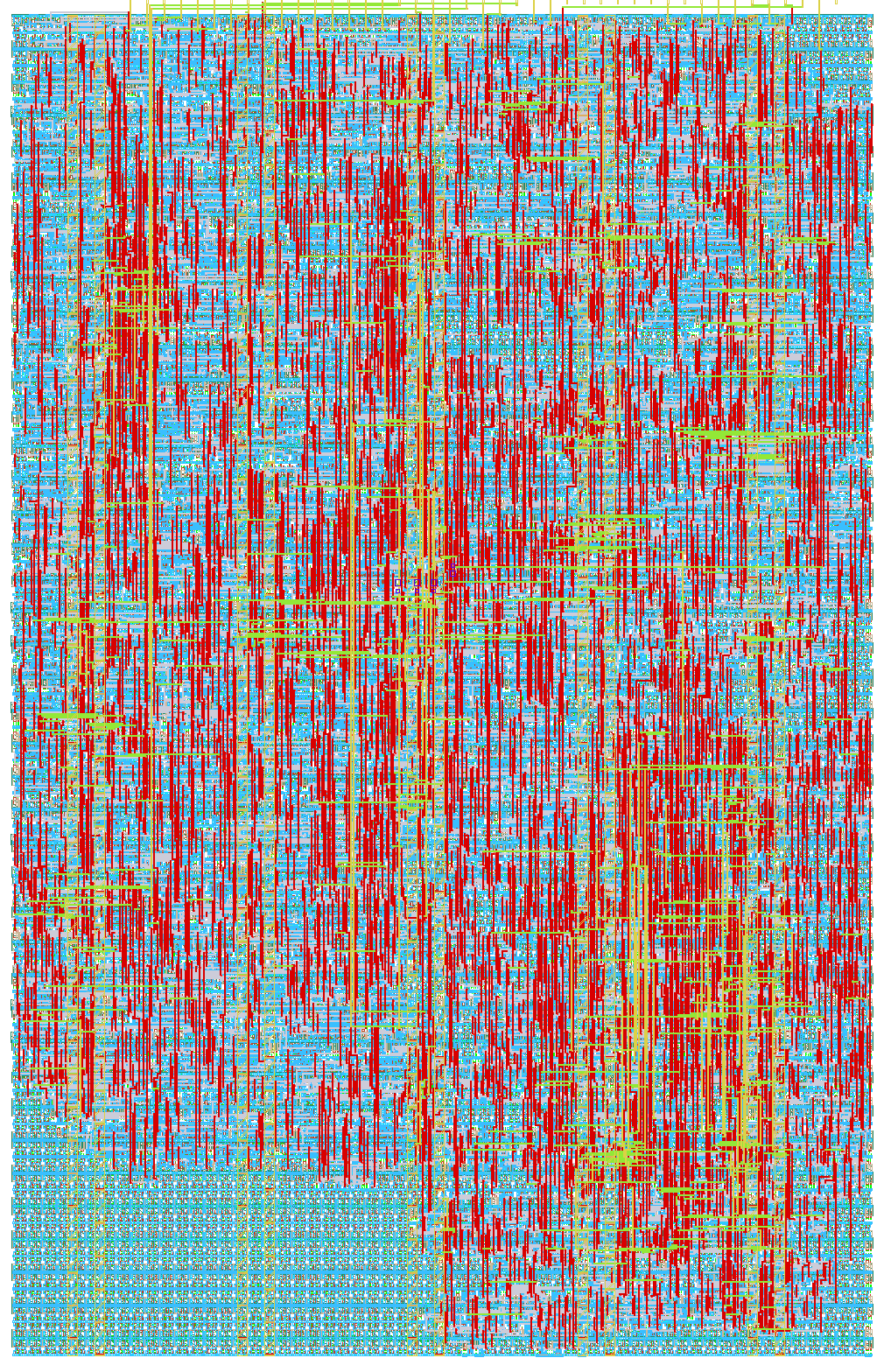677 pio-ram-emulator example: Julia fractal
677 : pio-ram-emulator example: Julia fractal

- Author: Toivo Henningsson
- Description: Example of using pio-ram-emulator to draw a Julia fractal
- GitHub repository
- Open in 3D viewer
- Clock: 50400000 Hz
How it works
This is an example of the using the https://github.com/toivoh/pio-ram-emulator RAM emulator for Tiny Tapeout. The RAM is used to store a frame buffer, 320x480 at 2 bits/pixel. The frame buffer is continuously read to output a 640x480 @60 Hz VGA signal. At the same time, the logic computes a Julia fractal, writing 16 bits to the frame buffer for every 8 pixels computed. After about a second, the whole frame buffer is filled in.
For more info about the RAM emulator, see https://github.com/toivoh/pio-ram-emulator/blob/main/docs/pio-ram-emulator.md.
The project contains some helper code for working with with the RAM emulator:
pio_ram_emulator.vandpio_ram_emulator.vh(sb_io.vis also need) contain the modulespio_ram_emu_transmitterandpio_ram_emu_receiver- These are used to transmit and receive messages using the RAM emulator's message format
- The design still has to follow the rules in https://github.com/toivoh/pio-ram-emulator/blob/main/docs/pio-ram-emulator.md about which messages can be sent when
- See
julia_top.vfor an example of how to use these modules
test/pio_ram_emulator_model.vcontains a simulation model of the RAM emulator- See
test/tb.vfor an example of how to use the simulation model in a test - See
verilator/vtop.vfor an example of how to use the simulation model in a verilator setup - The model will try to detect behavior that violates the rules in https://github.com/toivoh/pio-ram-emulator/blob/main/docs/pio-ram-emulator.md, in which case it will set an error flag and stop responding (see the
ERROR_RESPONSEparameter) - The simulation model is helpful, but might not capture the ful behavior of the RAM emulator. Please try to run your design on an FPGA against the actual RAM emulator as well.
- See
How to test
Plug in a TinyVGA VGA Pmod to the output Pmod. The https://github.com/toivoh/pio-ram-emulator RAM emulator must be running on the RP2040. TODO: Instructions for how to set up. Start the project.
Controls
The appearance of the Julia fractal is controlled by the C parameter, which can be seen as a complex value or 2d vector.
The C paramter can be changed using the ui_in port:
button_up/button_down/button_left/button_rightmove theCvalue.button_incstepdoubles the step length.button_decstephalves the step length.
A new ui_in[5:0] value must be stable for 2^19 cycles, or approximately 10 ms (at a 50.4 MHz clock rate), before it is accepted.
The use_both_button_dirs input changes how the input is interpreted:
- When
use_both_button_dirs = 0, an input is triggered when one of thebutton_signals goes from high to low (and is stable for 10 ms). Recommended if the inputs are connected to buttons. - When
use_both_button_dirs = 1, an input is triggered when one of thebutton_signals goes from high to low or low to high (and is stable for 10 ms). Recommended if the inputs are connected to toggle switches.
External hardware
This project needs a TinyVGA VGA Pmod.
IO
| # | Input | Output | Bidirectional |
|---|---|---|---|
| 0 | button_up | R1 | |
| 1 | button_down | G1 | |
| 2 | button_right | B1 | |
| 3 | button_left | vsync | |
| 4 | button_incstep | R0 | tx_out[0] |
| 5 | button_decstep | G0 | tx_out[1] |
| 6 | B0 | rx_in[0] | |
| 7 | use_both_button_dirs | hsync | rx_in[1] |